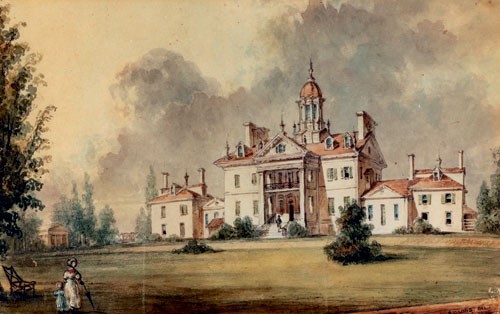
Robery Carey Long Jr., Hampton Mansion, 1838. Watercolor on paper. (Private collection; unless otherwise noted, all objects and photos are courtesy of Hampton National Historic Site, National Park Service.)
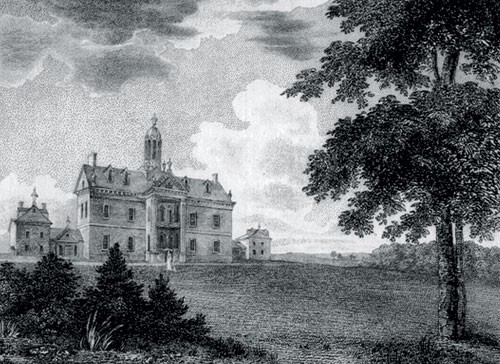
William Russell Birch, “Hampton the Seat of Genl. Chas. Ridgley, Maryland,” The Country Seats of the United States of North America, Springland near Bristol, PA, 1808. Engraving. 7" x 8 1/2".
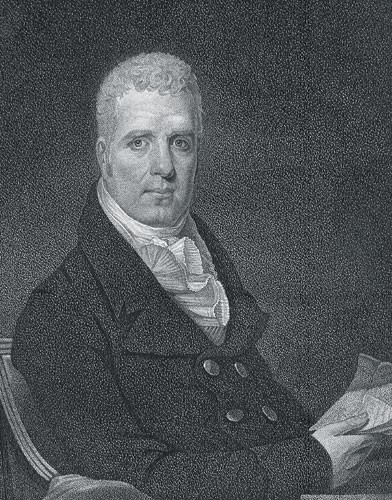
Goodman and Piggot, Charles Carnan Ridgely (1760–1829), ca. 1817–1822. Engraving. 6" x 4 3/4".
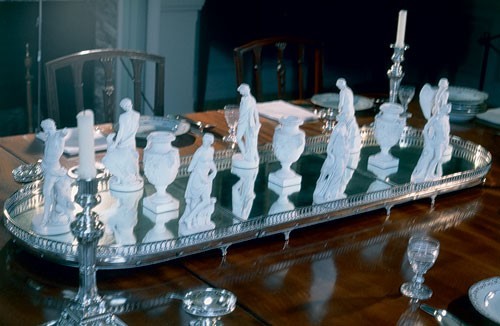
Plateau with figures of gods and goddesses, Niderviller, France, ca. 1792. Porcelain. H. of figures approx. 8 1/4". (Private collection; photo, Diana Edwards.) Plateaux were mirrored trays on small feet with silver or silver-gilt galleries; larger versions were divided into three or more sections. The one shown here, which included twenty-nine porcelain figures, was ordered by Edward Lloyd IV in 1792. Comprising five parts, it extended to nearly eight feet in length.
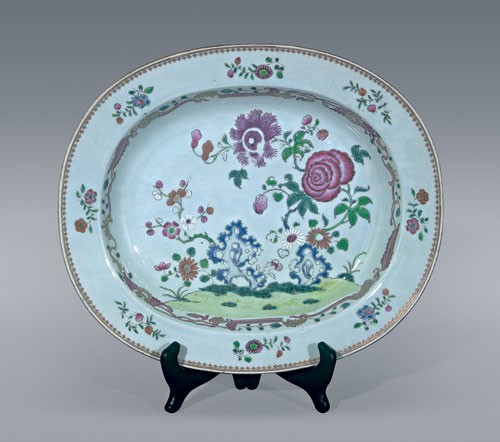
Dish, China, ca. 1750–1775. Porcelain. L. 16". NPSHAMP 21464. (Loan returned; no longer in collection of Hampton NHS.) Although this Chinese export was not part of Hampton’s collection during Captain Ridgely’s tenure, famille rose Chinese porcelains were popular with wealthy Maryland families, including the family of Charles Carroll the Barrister.
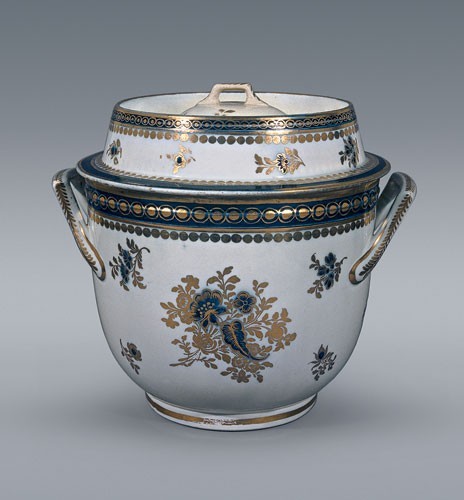
Fruit cooler, Caughley factory, Shropshire, England, ca. 1775-1779. Soft-paste porcelain decorated in the Dresden pattern. H. 9". NPSHAMP 11518. This cooler is one of a pair.
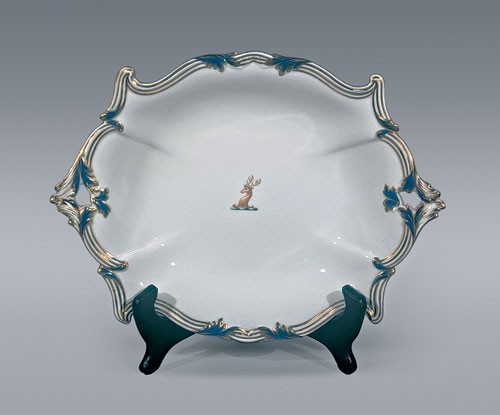
Dessert dish, Coalport factory, Shropshire, England, ca. 1820. Bone china, enamel painted in cobalt blue with gilding. L. 13". NPSHAMP 40353. At the center of each piece from this service is the Ridgely family crest.
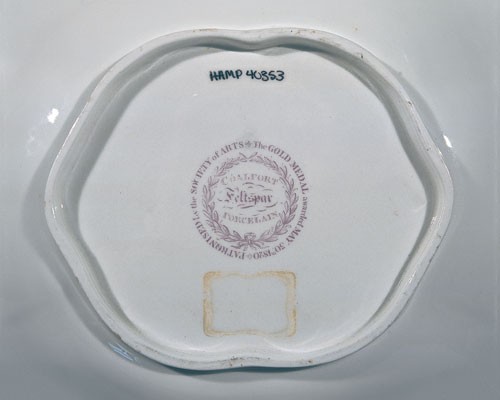
Detail of the Coalport factory mark on the reverse of the dessert dish illustrated in fig. 7.
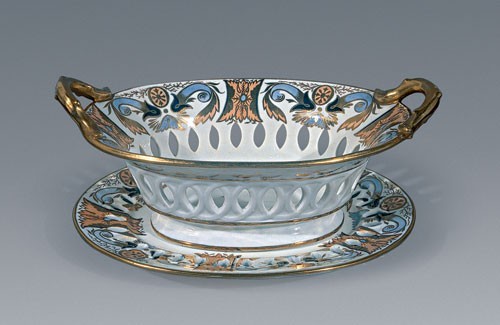
Basket and stand from dessert service, Davenport factory, Staffordshire, England, ca. 1805–1810. Bone china, enamel painted and gilded. H. of basket 6 1/2". L. of stand 10 3/4". Marks: on both, a red anchor surmounted by “Davenport” in a banner; the pattern number or painter’s mark “208.” NPSHAMP 1240, 1244.

Dish from dessert service, Worcester Porcelain Manufactory (Chamberlain’s factory), England, 1811-1820. Soft-paste porcelain, painted with cobalt blue and gilded. L. 12 1/2". Mark: “155” (pattern number). NPSHAMP 10207.
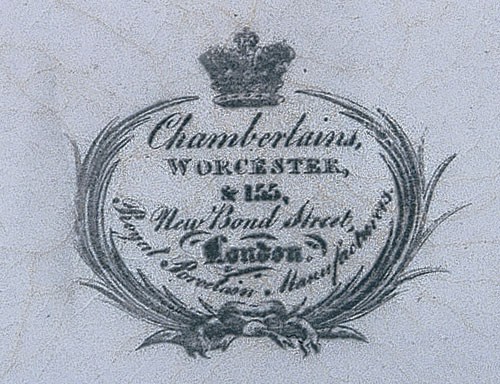
Detail of Chamberlain’s Worcester mark on the reverse of a square dessert dish from the same service as the dish illustrated in fig. 10.
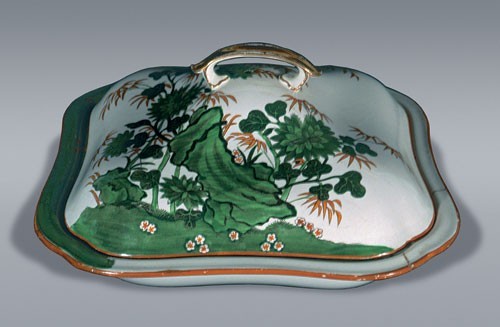
Vegetable dish and cover, Spode, Staffordshire, England, 1833-1847. Stoneware, with green enamels and gilding. H. (with handle) 6", L. 8 3/4". Mark: Copeland & Garrett “1666” (pattern number). NPSHAMP 9003a, b.
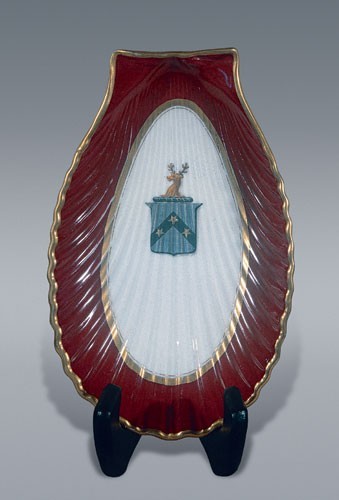
Serving dish from a dinner service, decorated by Feuillet, Boyer, Blot, and Hébert, Paris, ca. 1825. French porcelain, with enamel and gilding. L. 9 1/8". Mark: “Feuillet.” NPSHAMP 4158. At the center of each piece in the set is the Ridgely family coat of arms.
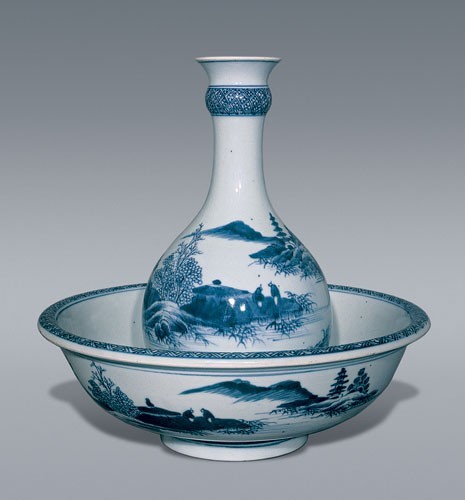
Ewer and basin, China, ca. 1750. Porcelain, with underglaze blue painting. H. of bottle 10 1/2"; D. of basin 12". NPSHAMP 4646, 4647. These Chinese exports were not part of the Ridgely estate but a museum purchase appropriate to furnishing the master bedchamber to circa 1790.
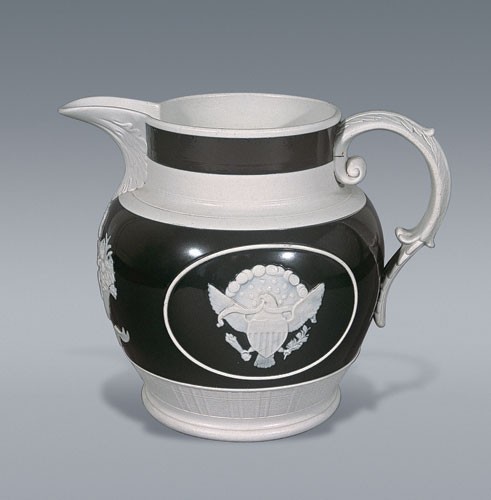
Pitcher, England, ca. 1805–1815. White stoneware, with brown dipped surface decoration. H. 6 1/4". NPSHAMP 4178. Pitchers made for the American market were produced by several Staffordshire and Yorkshire factories and are almost always unmarked. This example bearing sprig-relief American motifs was a museum purchase, relating to sherds found archaeologically at Hampton and in 1829 estate references.
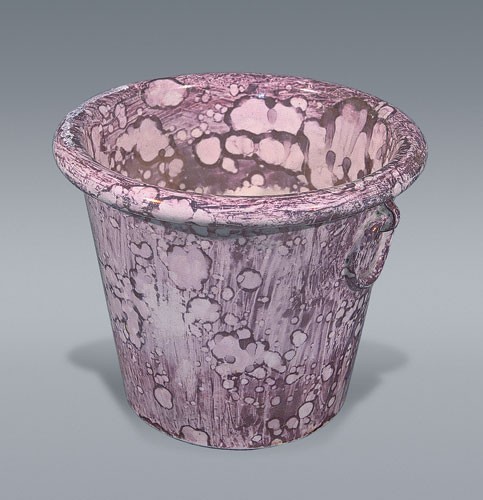
Cachepot, England, ca. 1810. Pearlware, with “moonlight luster” decoration. H. 5". NPSHAMP 10217. This cachepot, one of a pair acquired by the park in 1982, is typical of Charles Carnan Ridgely’s purchases in this period and helps to interpret his significant horticultural interest. Luster-decorated earthenwares are rarely attributable to a specific manufacturer.
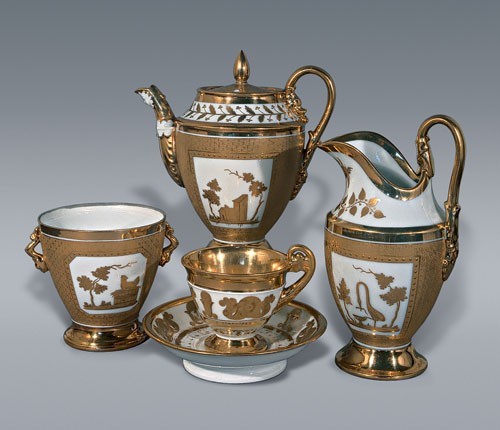
Partial tea/coffee set, decorated by Feuillet, Boyer, Blot, and Hébert, Paris, ca. 1825. Porcelain, with elaborate gilding. H. of tea/coffee pot 8 3/8". NPSHAMP 21413, 21419, 21424, 21425, 21426. (Loan returned; no longer in collection of Hampton NHS.)
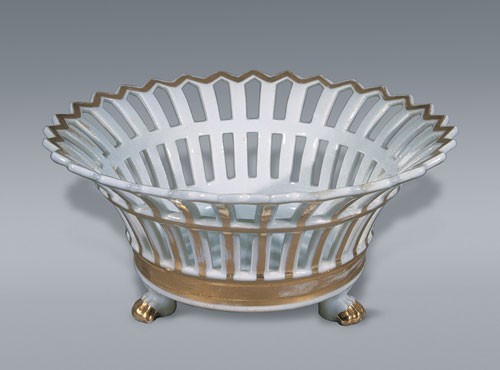
Fruit basket, Paris, ca. 1825. Porcelain, with gilding. H. 7", D. 9 3/8". NPSHAMP 4773.

Stand with pots de crèmes, Paris, ca. 1810–1830. Porcelain, with enamel decoration. H. of stand 15". H. of each pot de crème 4 3/8". The stand comprises five pieces held together by a metal rod. NPSHAMP 41998a–e, 41979–41989.

Covered butter dish on stand, France, ca. 1810–1830. Porcelain, with sprig or cornflower decoration. L. 12". NPSHAMP 42005.
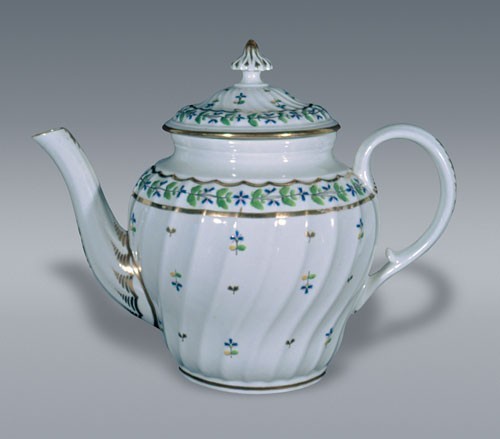
Teapot and lid, probably Worcester, Flight, and Barr, or Caughley (Shropshire), England, ca. 1790. Soft-paste porcelain, with sprig or cornflower decoration. H. 7 1/2". (Courtesy, private collection).
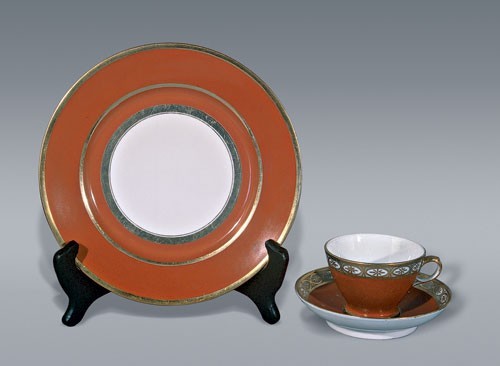
Plate, cup and saucer, Haviland & Company, Limoges, 1870-1890 (plate) 1800-1812 (cup and saucer) Plate: Hard-paste porcelain. D. 8 1/2". Mark: “H & Cie, L.” Cup: Hard-paste porcelain. D. 2 1/8". Mark: “Halley.” Saucer: Paris porcelain. D. 5". Mark: in script, “Halley.” NPSHAMP 9483, 9443, 9701. A group of teawares from two different periods was purchased by the Ridgelys as replacement pieces for an earlier service.
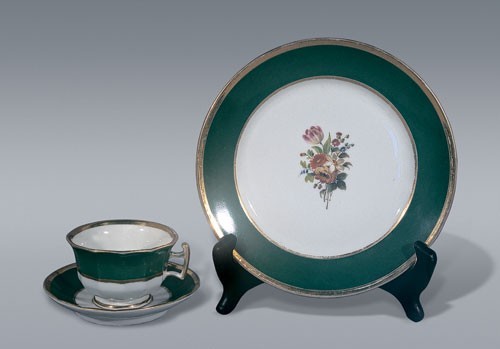
Plate, cup, and saucer, attributed to Feuillet, Boyer, Blot, and Hébert, Paris, ca. 1830–1834. Porcelain, with gilding. D. of plate 8 3/4"; H. of cup 2 1/2"; D. of saucer 5 1/2". NPSHAMP 4036–4077. This set, with a green band and floral center, was selected by Eliza Ridgely on a trip to Paris in October 1834.
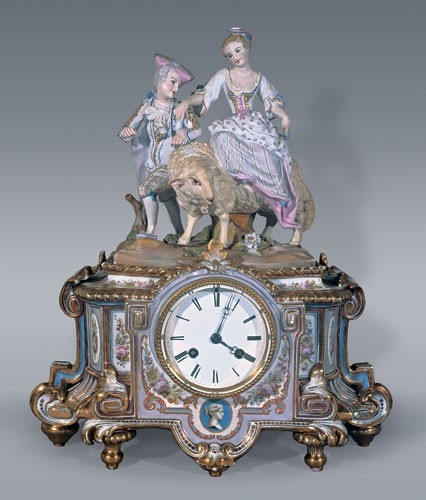
Mantel clock, France, ca. 1840–1850. Porcelain base with enamel painting, surmounted by biscuit porcelain figures. H. 17 3/4". NPSHAMP 4280a, b. Eliza Ridgely appears to have purchased this clock on one of her trips to Europe. Photos of the music room from the late nineteenth century show the clock on the mantel, where it is today.

Pair of vases, China, ca. 1837–1840. Porcelain, decorated in the Rose Canton style. H. 48 3/4". NPSHAMP 1025, 1026. A Caroline Butler of New York brought a smaller pair of vases of this variety back from her trip to China in 1837 (David Sanctuary Howard, New York and the China Trade [New York: New-York Historical Society, 1984], p. 122).
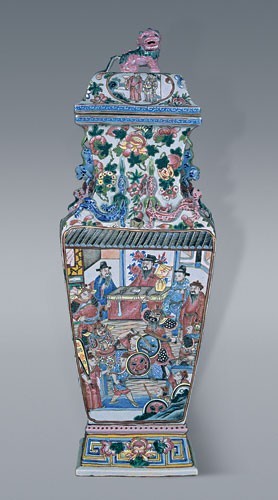
Vase, China, ca. 1840–1850. Porcelain, decorated in the Rose Canton style. H. 20". NPSHAMP 1172. This large vase, with elaborate applied decoration and a cover surmounted by a foo dog finial, is one of a pair.
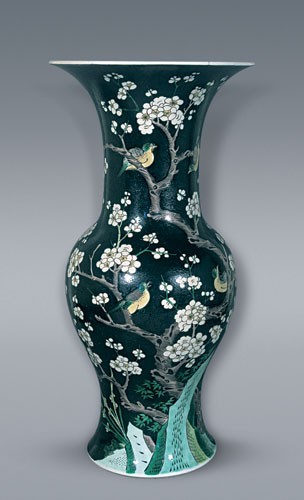
Vase, China, ca. 1860–1870. Porcelain. H. 17 7/8". NPSHAMP 10291. One of a pair, this large vase is decorated in a black ground with white prunus blossoms and translucent enamels in the famille verte style. The shape is known as yen yen and the vase is like one Warren Delano, a China trade merchant, brought back to New York in 1870. (Howard, New York and the China Trade, p. 134.)
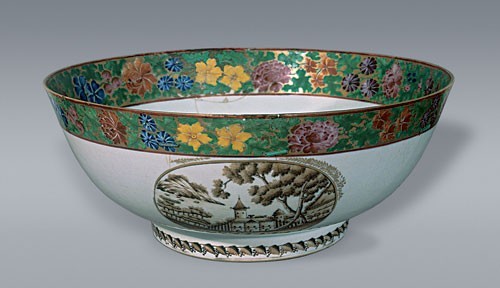
Bowl, China, ca. 1785–1800. Porcelain. D. 15 1/2". NPSHAMP 21445. This late Qing dynasty bowl is decorated with a green enamel floral border and a cartouche, painted in sepia, of a landscape.

Bowl, China, ca. 1800–1820. Porcelain, with enamel and elaborate gilding. D. 12 1/16". NPSHAMP 17629.
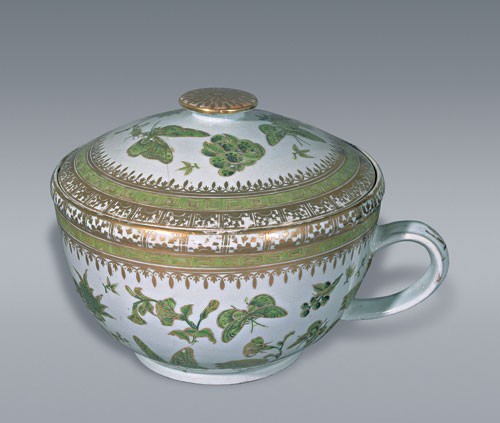
Chamber pot and cover, China, ca. 1825–1835. Porcelain, with green enamel and gilding. H. 8 1/4". NPSHAMP 10236.
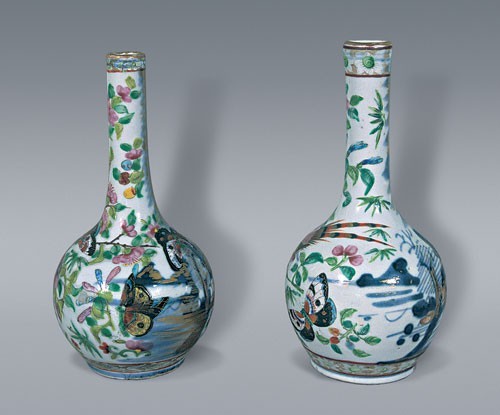
Bottles, China, ca. 1835–1850. Porcelain. H. 6 1/2". NPSHAMP 17630, 17631. These bottles are enamel decorated with the black butterfly motif in the Rose Canton style.
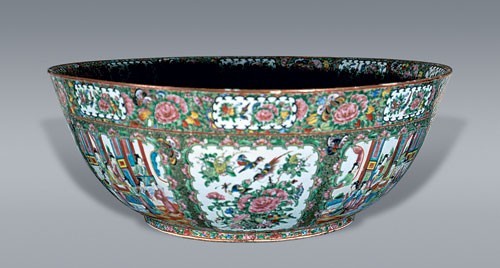
Punch bowl, China, ca. 1850–1870. Porcelain. D. 25". NPSHAMP 4770. This large bowl, decorated in the Rose Canton style, was not part of the Ridgely family possessions but a later gift. It is, however, very much in the taste of the grand purchases Eliza and John Ridgely made in the mid-nineteenth century.
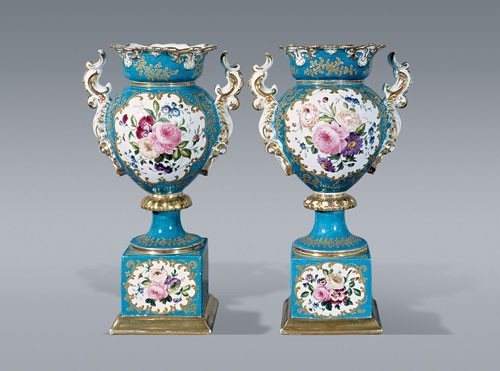
Pair of vases, France, ca. 1850. Porcelain. H. 12 3/4". NPSHAMP 10246, 10247. According to late-nineteenth-century photos, these vases, decorated with bleu céleste ground and reserve panels painted with flowers, sat on the mantel of the music room, where they still reside.

Box with medallions of the heads of Roman emperors, ca. 1778–1800. Wood (box) and plaster of paris (medallions). 12" x 8". NPSHAMP 22538. This box of portrait medallions, part of a set, was probably purchased by John and Eliza Ridgely on one of their European tours.
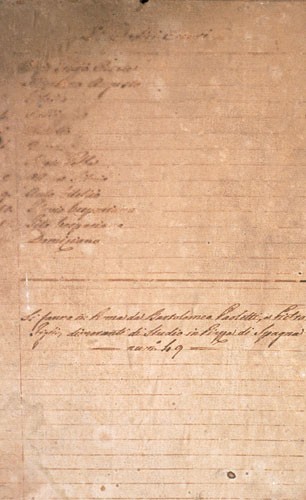
Handwritten list of the names of the emperors depicted on the medallions illustrated in 34. The list is affixed to the back of the box.
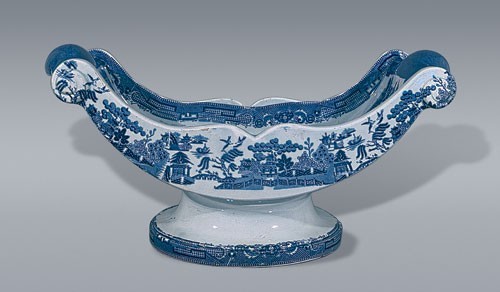
Cheese wheel stand, possibly Staffordshire, England, ca. 1850–1860. Earthenware. L. 17". NPSHAMP 10234. Transfer-printed with an underglaze blue willow pattern, this stand seems especially appropriate to find at Hampton, which had its own dairy dating from the eighteenth century.
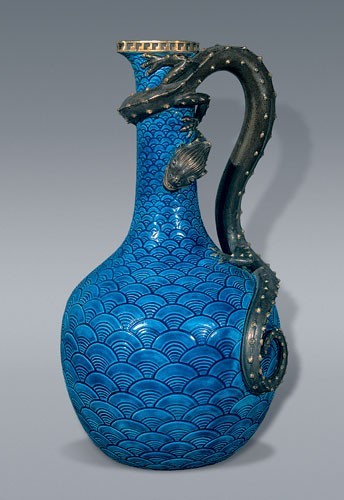
Jug, Worcester Royal, England. Porcelain Co., Ltd., 1884. Porcelain with turquoise scale ground and twisted lizard handle in gilt. H. 11". Marks: sepia crowned circle; date letter "V" incised pattern number “260”; impressed “9a.” NPSHAMP 17713. These Japonisme-style vases were the height of fashion at the period.
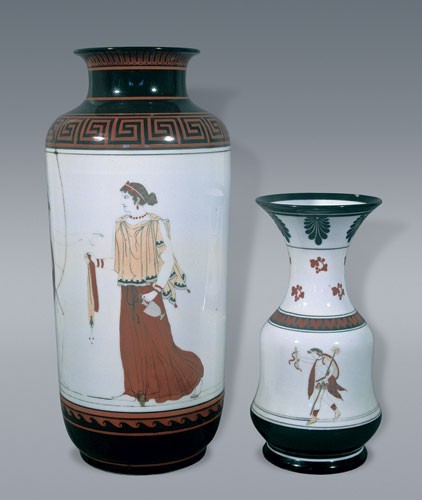
Two vases, England, ca. 1870. Earthenware, painted in Greek revival style. H. 13 7/8" and 9 1/2". NPSHAMP 10210, 21459.
